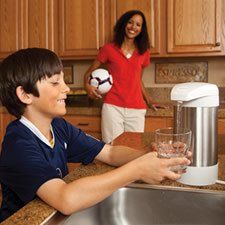Indoor Air Quality & SIPS
In recent years, a growing body of scientific evidence suggests that the air inside the places we live and work can be more polluted than the air outdoors. This poses a serious health risk to occupants.
Poor indoor air quality can lead to irritation of the eyes, nose, and throat. Furthermore, this can also increase susceptibility to headaches, viruses, and asthma-like symptoms.
Healthy Living

OUTDOOR AIR QUALITY is becoming an increasing hot topic as individuals and companies strive for a greener community in order to protect ourselves and others from the harmful and disastrous effects of pollution. Many of us already do our part to ensure a safe and pollution-free environment for future generations; we recycle cans, bottles, and paper, and we purchase low-emission vehicles. However, many of us don't realize that our own homes are contributing to global pollution at an alarming rate.
Fact: The Environmental Protection Agency (EPA) concluded that the average U.S. Home releases 22,000 lbs of toxic carbon dioxide (CO2) into the atmosphere each year. To put this in perspective, this is twice the amount of the average vehicle. To make matters worse, many of today's tighter and poorly insulated homes are trapping dangerous airborne pollutants such as mold, bacteria, and fungus. These polluting agents can increase our susceptibility to respiratory illnesses and lower our immunity to viruses.
What is the solution to indoor air pollution?
The solution to reducing or removing indoor air pollution is to build a tight but well-ventilated home, where the ventilation is under your control. Homes built with SIPs from Tanguay Homes of Newport, Vermont will easily achieve a tight and superior thermal blanket and an air ex-changer can easily repel stale and polluted indoor air as well as bring in fresh air from the outdoors. Just the simple act of opening your windows and doors can greatly increase indoor air quality.
Mold growth is a serious concern for many homeowners. Fortunately, there are no known toxic molds, but there are several species that release micro toxins, which, in high enough dosages, can cause individuals afflicted with hypersensitivities quite ill.
As with most indoor pollutants, the best defense is to control moisture, however this is no easy task since many domestic activities such as bathing, cooking, and doing laundry can release and trap this water vapor.
What is the solution to outdoor pollution?
There is no simple answer to the question: What is the solution to pollution? However, there are several steps that you can take in order to reduce pollutants in the environment. We are concerned about the environment, and we take many measures to ensure our manufacturing facility is as green as possible.
We are a globally conscious company so we make sure our facility recycles waste and conserves electricity. If that's not enough, we manufacture green products. Our structural insulated panels are fabricated from renewable trees that protect old growth forests. They contain no CFC's - the dangerous gas responsible for the greenhouse effect. Our SIPs can be assembled on the job-site with little to no construction waste which reduces space in waste management facilities and landfills. Even the cars we drive are environmentally friendly.
What about noise pollution?
In addition to air pollution, a
SIPs home can also reduce noise pollution. Due to the continuous air sealing and tightness of insulation, SIP homes can reduce and even eliminate much unwanted outdoor clatter. This greatly increases the quality of sleep for homeowners, a crucial component to physical and mental well-being.
Simply put: homes built with structural insulated panels are comfortable, maintain a comfortable living environment, and reduce pollution.
Information Provided by Foam Laminates of Vermont via: http://www.foamlaminates.com
